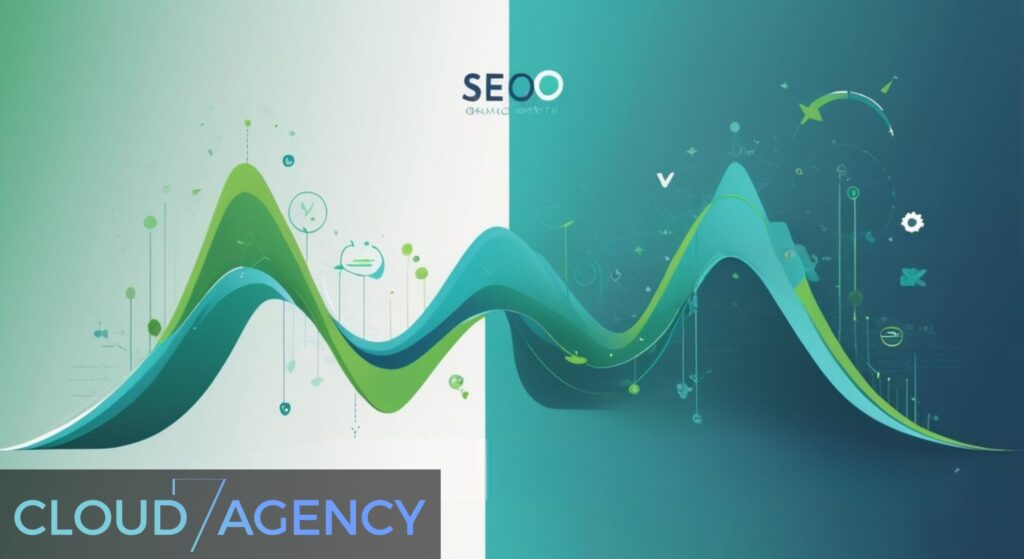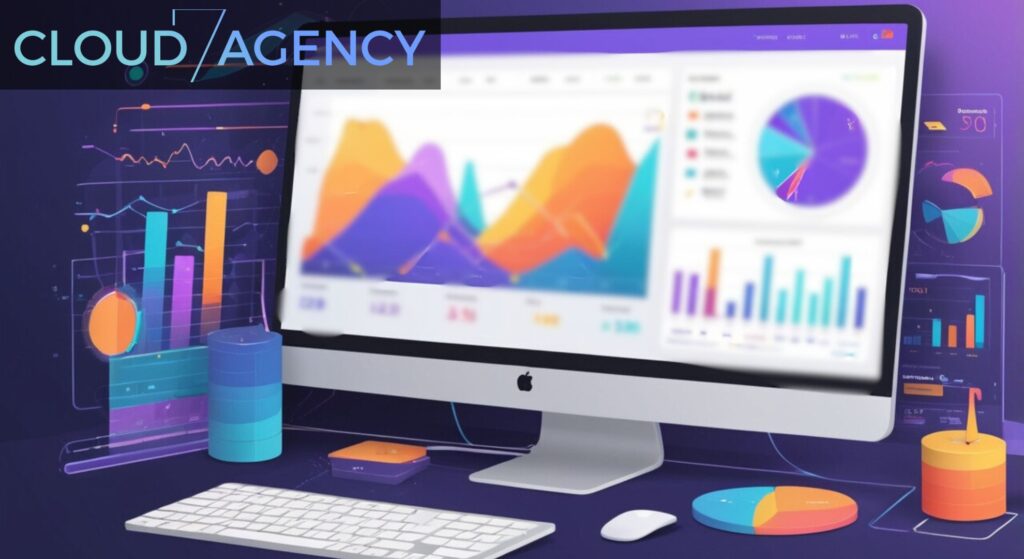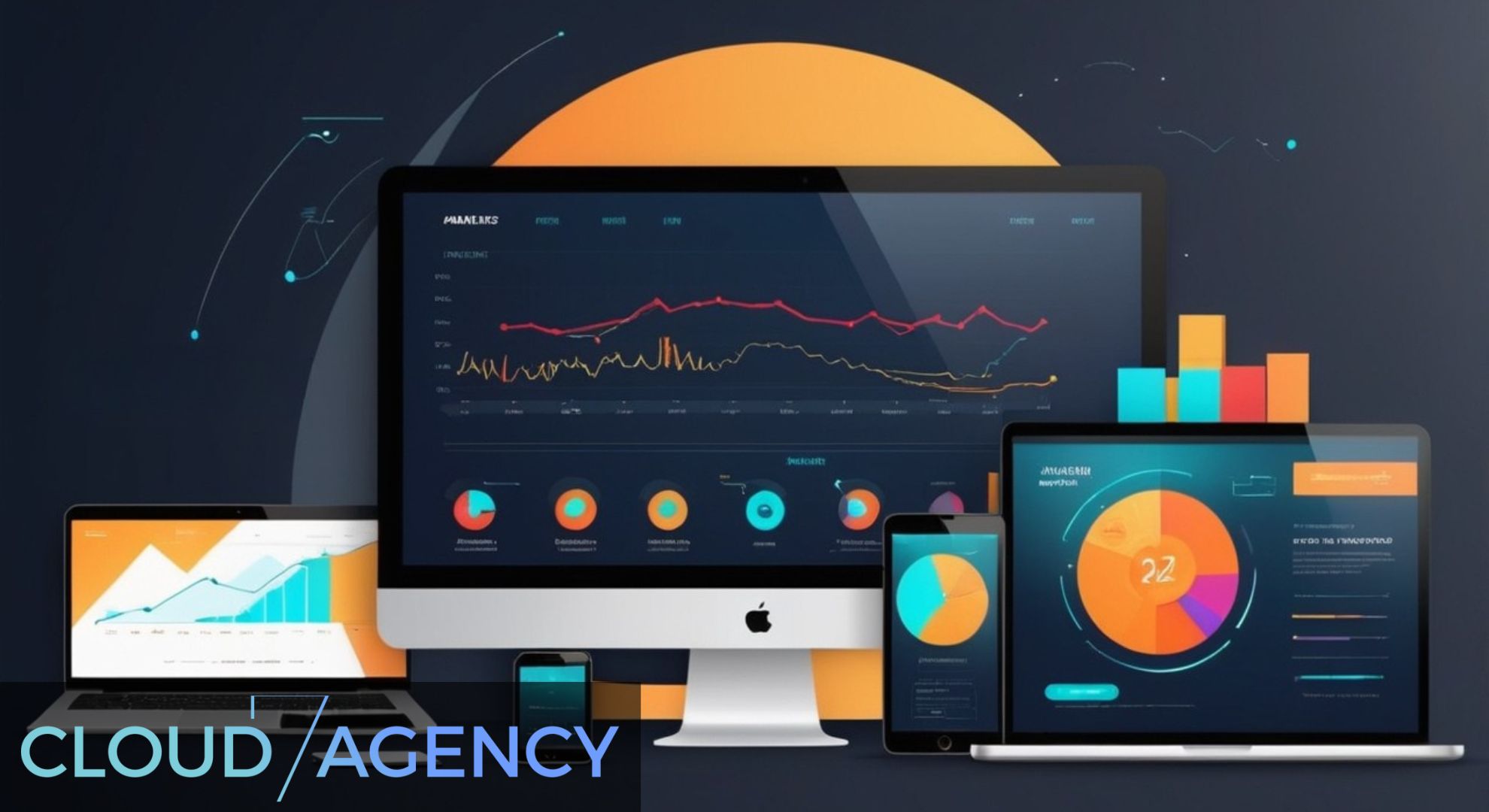In today’s competitive digital landscape, the traditional approach of treating PPC and SEO as separate marketing channels is becoming increasingly obsolete. Forward-thinking marketers are discovering that the real power lies in PPC and SEO integration, creating a unified strategy that amplifies the strengths of both channels while minimizing their individual weaknesses. This strategic convergence represents a fundamental shift in how businesses approach search marketing, moving beyond siloed campaigns toward a holistic ecosystem that maximizes search visibility and drives superior results.
The evolution of search marketing has reached a critical juncture where the synergy between paid and organic search strategies can make or break a company’s online presence. While SEO builds long-term authority and sustainable traffic, PPC provides immediate visibility and valuable data insights. When these channels operate in isolation, businesses miss countless opportunities for cross-pollination of insights, keyword intelligence, and audience understanding that could dramatically improve their overall search performance.
Modern search engines have evolved to become increasingly sophisticated, with user intent and experience taking precedence over traditional ranking factors. This evolution has created new opportunities for businesses that understand how to leverage PPC SEO synergy effectively. The integration of these channels allows marketers to create a comprehensive search presence that dominates both paid and organic results, effectively owning the search engine results page (SERP) for their target keywords.
The benefits of integrated PPC and SEO strategies extend far beyond simple traffic generation. This approach enables businesses to gather comprehensive market intelligence, optimize their content strategy based on real-time performance data, and create feedback loops that continuously improve both paid and organic performance. Companies that master this integration often see dramatic improvements in their overall return on investment, as the combined effect of both channels working in harmony typically exceeds the sum of their individual contributions.
Understanding the nuances of PPC and SEO integration requires a deep appreciation for how these channels complement each other throughout the customer journey. From initial awareness through final conversion, integrated strategies ensure that potential customers encounter consistent messaging and optimized experiences regardless of how they discover your brand through search.
Key Takeaways
Data Sharing Amplifies Performance: PPC campaigns provide immediate keyword performance data that can inform SEO strategy, while SEO research reveals high-value organic opportunities that can be tested quickly through paid campaigns. This bidirectional data flow creates a continuous optimization cycle that improves both channels simultaneously.
Complete SERP Domination: Integrated strategies enable businesses to occupy multiple positions on search results pages, appearing in both paid and organic listings. This increased visibility significantly improves click-through rates and brand recognition while making it harder for competitors to gain search real estate.
Enhanced Keyword Intelligence: PPC campaigns offer real-time conversion data and user behavior insights that take months to gather through SEO alone. This intelligence helps prioritize SEO efforts on keywords with proven commercial value while identifying negative keywords that save PPC budget.
Improved Quality Scores and Rankings: SEO-optimized landing pages typically achieve higher Quality Scores in PPC campaigns, reducing cost-per-click and improving ad positions. Simultaneously, PPC traffic can provide positive user signals that may benefit organic rankings when users engage meaningfully with the content.
Risk Mitigation and Stability: Diversifying search presence across both paid and organic channels protects against algorithm updates, competitive threats, and seasonal fluctuations. When organic rankings drop, PPC can maintain visibility, and when PPC costs increase, strong organic presence provides stability.
Accelerated Testing and Optimization: PPC allows for rapid testing of ad copy, landing pages, and keyword variations that can inform SEO content creation and optimization strategies. This acceleration of the testing cycle enables faster iteration and improvement across both channels.
Understanding the Foundation of PPC and SEO Integration
The foundation of successful PPC and SEO integration lies in recognizing that both channels serve the same fundamental purpose: connecting businesses with potential customers who are actively searching for their products or services. However, they achieve this goal through different mechanisms and timelines, creating complementary strengths that can be leveraged strategically.

SEO focuses on building long-term organic visibility through content optimization, technical improvements, and authority building. This process typically requires months to show significant results but creates sustainable traffic that doesn’t require ongoing advertising spend. The organic nature of SEO results also tends to generate higher trust levels among users, as many consumers view organic listings as more credible than paid advertisements.
PPC, conversely, provides immediate visibility and precise targeting capabilities through platforms like Google Ads that allow businesses to appear prominently for specific keywords within hours of campaign launch. This immediacy comes at a direct cost per click, but it also provides valuable data about keyword performance, user behavior, and conversion rates that can inform broader marketing strategies. The granular control available in PPC campaigns enables testing and optimization at a pace that’s impossible with organic search alone.
The integration opportunity emerges when these complementary strengths are combined strategically. PPC data can reveal which keywords drive the highest-quality traffic and conversions, enabling SEO teams to prioritize their content creation and optimization efforts on terms with proven commercial value. Simultaneously, SEO research can uncover long-tail keyword opportunities and content themes that can be tested quickly and cost-effectively through targeted PPC campaigns.
Modern search behavior also supports the case for integration, as users often interact with both paid and organic results during their research and purchasing journey. Studies consistently show that businesses appearing in both paid and organic results for the same query achieve higher overall click-through rates than those appearing in only one section. This phenomenon, known as “incremental lift,” demonstrates that PPC and SEO integration creates a synergistic effect that amplifies the performance of both channels.
Strategic Keyword Research and Data Sharing
The cornerstone of effective PPC and SEO integration lies in developing a unified approach to keyword research and data sharing that leverages the unique advantages of each channel. Traditional keyword research often relies on third-party tools and estimated search volumes, but integrated strategies can access real performance data from PPC campaigns to validate and refine SEO targeting decisions.
PPC campaigns provide immediate access to actual search query data, including exact match search terms, impression volumes, click-through rates, and conversion performance. This real-world data offers insights that no keyword research tool can match, revealing the actual language and phrases that potential customers use when searching for products or services. SEO teams can use this validated keyword data to inform their content strategy, ensuring they’re targeting terms with proven search volume and commercial intent.
The process of strategic data sharing begins with establishing regular communication channels between PPC and SEO teams. Weekly or monthly data sharing sessions should focus on identifying high-performing keywords from PPC campaigns that warrant SEO attention, as well as highlighting organic keyword opportunities that could benefit from PPC testing. This collaborative approach ensures that both teams are working toward common goals rather than competing for the same traffic sources.
Advanced practitioners take this integration further by implementing shared keyword tracking systems that monitor performance across both channels simultaneously. These systems can identify opportunities where strong organic rankings might allow for reduced PPC spending, or where declining organic positions require increased paid support to maintain overall visibility. The goal is to optimize the total cost of search traffic rather than optimizing each channel in isolation.
Negative keyword sharing represents another crucial aspect of integrated keyword strategy. PPC campaigns quickly identify search terms that generate clicks but don’t convert, providing valuable negative keyword lists that can inform SEO content strategy. Understanding which terms to avoid in SEO content helps focus efforts on higher-value opportunities while preventing the creation of content that attracts low-quality traffic.
Long-tail keyword discovery through PPC also provides SEO teams with content creation opportunities that might otherwise be overlooked. PPC campaigns can test hundreds of long-tail variations quickly and cost-effectively, identifying specific phrases that drive conversions. These validated long-tail keywords can then become the foundation for detailed, targeted content that captures organic traffic for these specific queries.
Landing Page Optimization and Quality Score Synergy
The intersection of landing page optimization for PPC and SEO creates powerful opportunities for improving performance across both channels while maximizing the return on content development investments. Quality Score in PPC campaigns heavily weights landing page experience, while SEO success depends largely on creating valuable, relevant content that satisfies user intent. These requirements align naturally, creating opportunities for synergistic optimization efforts.

SEO-optimized landing pages typically perform better in PPC campaigns because they’re designed with user experience and relevance in mind. These pages often feature comprehensive content that addresses various aspects of user queries, clear navigation structures, and optimized loading speeds – all factors that contribute to higher Quality Scores. When PPC campaigns direct traffic to well-optimized organic landing pages, advertisers often see improved Quality Scores, lower cost-per-clicks, and better ad positions.
The content depth required for effective SEO also benefits PPC conversion rates by providing visitors with comprehensive information that addresses their concerns and questions. While PPC landing pages are often stripped-down conversion-focused pages, SEO-optimized pages can serve both purposes when designed thoughtfully. These hybrid landing pages maintain conversion focus while providing the content depth and internal linking structure that search engines value for organic rankings.
Technical optimization efforts for SEO, such as improving page loading speeds, mobile responsiveness, and core web vitals, directly impact PPC Quality Scores and conversion rates. Google’s emphasis on page experience signals affects both organic rankings and paid campaign performance, making technical optimization investments doubly valuable. Teams that coordinate their technical optimization efforts can achieve improvements across both channels simultaneously.
A/B testing capabilities in PPC campaigns provide valuable insights for SEO landing page optimization. PPC allows for rapid testing of different headlines, calls-to-action, and page layouts that can inform organic page optimization decisions. The statistical significance achieved through paid traffic testing can guide SEO optimization efforts, reducing the time required to identify effective page improvements through organic traffic alone.
Content expansion strategies also benefit from PPC and SEO integration. PPC campaigns can identify which aspects of a topic drive the highest engagement and conversions, informing content expansion efforts that improve organic rankings. For example, if PPC data shows that certain product features or benefits drive higher conversion rates, SEO content can be expanded to emphasize these elements, potentially improving both organic rankings and conversion rates.
Competitive Intelligence and Market Positioning
Integrated PPC and SEO strategies provide unprecedented opportunities for competitive intelligence gathering and strategic market positioning that neither channel can achieve independently. The combination of paid and organic data sources creates a comprehensive view of the competitive landscape that enables more informed strategic decisions and tactical adjustments.
PPC campaigns offer immediate visibility into competitor advertising strategies, including ad copy approaches, landing page experiences, and bidding patterns. Auction insights reports reveal which competitors are most active in paid search, their impression share, and their relative positioning strength. This intelligence can inform both PPC bidding strategies and SEO competitive analysis, helping teams understand which competitors pose the greatest threats across different search channels.
SEO competitive analysis reveals long-term content strategies, link building approaches, and organic keyword positioning that competitors have developed over time. This historical perspective on competitor behavior helps predict future competitive moves and identifies content gaps that can be exploited through both organic and paid strategies. Understanding competitor content themes and keyword targeting helps inform both SEO content development and PPC campaign structure.
The integration of competitive intelligence from both channels enables more sophisticated market positioning strategies. Teams can identify opportunities where competitors are strong in organic search but weak in paid search, or vice versa, allowing for strategic resource allocation that exploits these competitive gaps. This analysis might reveal opportunities to dominate specific keyword categories through coordinated paid and organic efforts.
Brand protection strategies also benefit significantly from integrated competitive intelligence. Monitoring competitor bidding on branded terms through PPC provides immediate alerts about competitive threats, while SEO monitoring reveals attempts to target branded content organically. Coordinated responses can include both increased PPC bidding on branded terms and enhanced SEO efforts to strengthen organic brand presence.
Market share analysis becomes more accurate and actionable when combining PPC and SEO competitive data. Understanding total search visibility across both paid and organic results provides a clearer picture of actual market position than analyzing either channel independently. This comprehensive view enables more accurate competitive benchmarking and goal setting for both channels.
Seasonal and trend analysis also improves through integrated competitive monitoring. PPC data reveals how competitors adjust their advertising strategies seasonally, while SEO monitoring shows how they modify their content and optimization approaches. This intelligence enables proactive strategy adjustments that anticipate competitive moves rather than simply reacting to them.
Attribution Modeling and Performance Measurement
Developing accurate attribution models for integrated PPC and SEO strategies presents both challenges and opportunities that require sophisticated measurement approaches. Traditional last-click attribution models fail to capture the complex interactions between paid and organic touchpoints throughout the customer journey, potentially leading to misguided optimization decisions and budget allocation.

Multi-touch attribution models become essential when measuring integrated campaign performance, as customers often interact with both paid and organic results before converting. These models help identify how PPC and SEO work together to drive conversions, revealing scenarios where PPC clicks lead to organic conversions, or where organic research leads to paid conversions. Understanding these interaction patterns enables more intelligent budget allocation and strategy optimization.
Cross-channel conversion tracking requires careful implementation of analytics systems that can follow users across multiple touchpoints and traffic sources. Advanced tracking setups use UTM parameters, custom dimensions, and audience segmentation to identify users who interact with both paid and organic results. This tracking capability reveals the true value of integrated strategies and helps justify continued investment in both channels.
Assisted conversion analysis provides crucial insights into how each channel contributes to the overall conversion process. PPC campaigns might excel at introducing new visitors to the brand, while organic search might be more effective at converting users who are already familiar with the company. Understanding these roles helps optimize each channel for its strengths while maintaining overall campaign cohesion.
Lifetime value analysis becomes more complex but more accurate when considering integrated customer acquisition strategies. Customers acquired through different channel combinations may have different long-term value profiles, affecting optimal customer acquisition cost calculations. This analysis might reveal that customers who interact with both paid and organic results before converting have higher lifetime values, justifying increased investment in integrated strategies.
The measurement of brand lift and awareness effects requires sophisticated analytical approaches that can isolate the impact of integrated campaigns. Brand search volume increases, direct traffic improvements, and social media engagement changes can all indicate successful brand building through integrated search strategies. These metrics help demonstrate the broader value of PPC and SEO integration beyond direct conversion attribution.
Real-time performance monitoring systems enable rapid optimization adjustments based on integrated campaign performance. Automated alerts can notify teams when organic rankings drop for high-value keywords, triggering increased PPC investment to maintain visibility. Similarly, when PPC costs increase significantly, teams can prioritize SEO efforts for those keywords to reduce long-term advertising dependence.
Implementation Framework and Best Practices
Successfully implementing integrated PPC and SEO strategies requires a structured framework that addresses organizational alignment, process development, and technology integration. The complexity of managing multiple channels simultaneously demands careful planning and systematic execution to achieve optimal results.
Organizational structure plays a crucial role in integration success, as traditional marketing teams often operate in channel-specific silos that inhibit effective collaboration. Leading organizations are restructuring their teams around customer journey stages or business objectives rather than marketing channels, ensuring that PPC and SEO specialists work together toward common goals. This might involve creating integrated search teams or implementing regular cross-channel planning sessions.
Technology integration forms the backbone of effective PPC and SEO coordination, requiring analytics platforms, reporting systems, and automation tools that can handle multi-channel data. Marketing teams need unified dashboards that display performance metrics from both channels side-by-side, enabling quick identification of optimization opportunities and performance trends. API integrations between PPC platforms and SEO tools can automate data sharing and reduce manual reporting overhead.
Process development should establish clear workflows for data sharing, strategy coordination, and optimization decision-making. Regular review cycles should examine performance across both channels, identify integration opportunities, and coordinate optimization efforts. These processes might include weekly keyword performance reviews, monthly competitive analysis sessions, and quarterly strategic planning meetings that align PPC and SEO roadmaps.
Budget allocation strategies for integrated campaigns require sophisticated modeling that considers the interaction effects between channels. Rather than allocating fixed budgets to each channel independently, successful integration often involves flexible budget allocation that can shift resources based on performance opportunities and competitive dynamics. This might mean increasing PPC spending when organic rankings decline, or reducing paid investment when organic improvements provide sufficient visibility.
Quality assurance processes become more complex with integrated strategies, requiring coordination to ensure that changes in one channel don’t negatively impact the other. Landing page modifications for SEO should be tested for their impact on PPC Quality Scores and conversion rates. Similarly, PPC landing page tests should consider their potential effects on organic rankings and user experience.
Training and skill development programs should ensure that team members understand both channels sufficiently to identify integration opportunities. While specialists will maintain deep expertise in their primary channels, cross-training helps teams recognize when coordination opportunities arise and communicate effectively across channel boundaries.
At C7A, we understand that implementing integrated PPC and SEO strategies requires both strategic vision and tactical expertise. Our team specializes in developing customized integration frameworks that align with specific business objectives and organizational structures, ensuring that clients achieve maximum value from their search marketing investments.
Frequently Asked Questions
How do I start integrating my existing PPC and SEO campaigns?
Begin by conducting a comprehensive SEO audit of your current campaigns to identify overlap opportunities and data sharing possibilities. Start with keyword data sharing between teams and gradually expand to landing page optimization and competitive intelligence coordination.
Will running PPC ads hurt my organic rankings?
No, running PPC ads does not directly impact organic rankings. Google has consistently stated that paid advertising does not influence organic search results. However, PPC can indirectly benefit SEO through increased brand awareness and traffic that leads to more natural backlinks.
How do I measure the success of integrated campaigns?
Use multi-touch attribution models that track user interactions across both channels. Focus on overall search visibility, total cost per acquisition, and lifetime customer value rather than optimizing each channel in isolation.
Should I bid on keywords where I already rank organically?
Yes, in many cases. Studies show that appearing in both paid and organic results increases total click-through rates. Additionally, bidding on branded terms protects against competitor ads and maintains visibility during organic ranking fluctuations.
How often should PPC and SEO teams share data?
Establish weekly data sharing sessions for tactical optimization and monthly strategic reviews for broader campaign coordination. Real-time alerts should notify teams of significant changes that require immediate attention.
What tools are best for managing integrated campaigns?
Look for platforms that offer unified reporting across paid and organic channels. Google Analytics 4, combined with Google Ads and Search Console integration, provides a solid foundation. Third-party tools like SEMrush, Ahrefs, or BrightEdge offer additional integration capabilities.
How do I allocate budget between PPC and SEO?
Base allocation decisions on your business timeline, competitive landscape, and current performance. New businesses or competitive markets might require more PPC investment for immediate visibility, while established brands might emphasize SEO for long-term efficiency.
Can small businesses benefit from PPC and SEO integration?
Absolutely. Small businesses often benefit more from integration because they have limited resources and need maximum efficiency. Sharing insights between channels helps small teams make better decisions and avoid costly mistakes in both paid and organic strategies.
Conclusion
The integration of PPC and SEO strategies represents a fundamental evolution in search marketing that forward-thinking businesses cannot afford to ignore. As search engines become more sophisticated and user behavior continues to evolve, the artificial barriers between paid and organic search are dissolving, creating new opportunities for businesses that understand how to leverage PPC SEO synergy effectively.
The evidence is clear that integrated approaches deliver superior results compared to managing these channels in isolation. From improved keyword intelligence and enhanced Quality Scores to comprehensive competitive positioning and more accurate attribution modeling, the benefits of integration compound across every aspect of search marketing. Organizations that continue to operate PPC and SEO as separate entities are likely missing significant opportunities for optimization and growth.
Success in integrated search marketing requires more than simply running both PPC and SEO campaigns simultaneously. It demands a fundamental shift in thinking about how these channels complement each other throughout the customer journey, supported by appropriate organizational structures, technology platforms, and measurement frameworks. The complexity of this integration may seem daunting, but the competitive advantages gained by those who master it make the investment worthwhile.
As we look toward the future of search marketing, the trends point toward even greater integration opportunities. Artificial intelligence and machine learning capabilities are making it easier to identify optimization opportunities across channels, while evolving privacy regulations are making first-party data from integrated campaigns increasingly valuable. Businesses that establish strong integration practices now will be better positioned to capitalize on these emerging opportunities.
The path forward requires commitment to breaking down traditional silos, investing in appropriate tools and training, and maintaining focus on overall business objectives rather than channel-specific metrics. With proper implementation, PPC and SEO integration becomes a powerful competitive advantage that drives sustainable growth and improved return on marketing investment.

